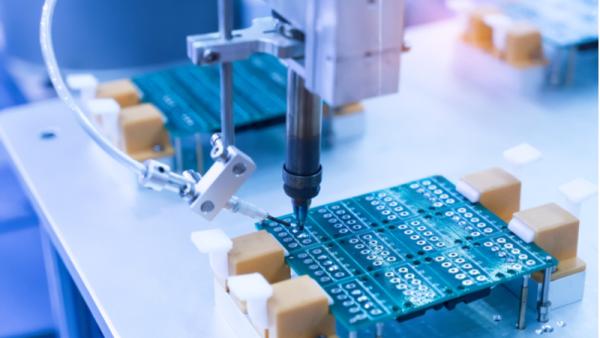管控中澳分歧 Managing China-Australia differences (Bilingual)
asharkyu / Shutterstock

James Laurenceson (罗震), Director, Australia-China Relations Institute, University of Technology Sydney (院长, 澳中关系研究院, 悉尼科技大学) |
This article appeared in China Daily on August 21 2020. This article includes a Simplified Chinese translation by Jun Wang, NAATI Level 3 translator (NAATI ID: 80136).
本文于2020年8月21日发表于中国日报。本文由 Jun Wang(NAATI三级翻译员; NAATI ID: 80136)翻译。
As China’s conflict with the United States moves from trade to technology, Beijing will also need to decide how it will manage its differences with US allies like Australia.
随着中美间的冲突从贸易转战科技领域,北京需要开始考虑如何管控与美国众多盟友之间的分歧,澳大利亚就 是其中一员。
The future need not be bleak.
未来不一定是暗淡的。
To see why, go back to 2018 when the Trump administration launched its trade war against China.
想了解其中的原因,让我们回到2018年,那时特朗普(Trump)政府对中国发动了贸易战。
While Australian Prime Minister Scott Morrison initially expressed sympathy for some US grievances, like China’s extensive use of industrial subsidies, Australia was never going to agree to signing up to an assault against its largest trading partner.
尽管澳大利亚总理斯科特莫里森(Scott Morrison)一开始对美国的一些不满表达了同情,比如中国大肆进行工业补贴等,然而澳大利亚从未同意跟进对自己最大贸易伙伴的攻击。
On Nov 6, 2018, Trade Minister Simon Birmingham said “we’ve been very clear in our position all along that we do not approve or support the US actions of increasing tariffs in a unilateral way on Chinese goods”.
2018年11月6日,联邦贸易部长西蒙伯明翰(Simon Birmingham)表示,“我们对自己的立场一直非常清晰,那就是我们不赞同或支持美国对中国商品提高关税的单边行动”。
As further proof, in May this year, Australia teamed up with China to set up an alternative to the World Trade Organization’s dispute resolution body that the Trump administration sabotaged at the end of last year.
作为进一步证明,今年5月,澳大利亚同中国合作建立起一个临时组织,替代特朗普政府去年底杯葛的世界贸易组织争议解决机构的职能。
To be clear, Canberra was not setting out to be ‘pro-China’ on trade. Or ‘anti-US’. Rather, it was committed to being ‘pro-Australia’.
需要明确的是,堪培拉并不是准备开始在贸易上“亲中”,或是“反美”。其实它致力于“从澳大利亚出发”。
And in 2019, Australia’s two-way trade with China stood at A$252 billion (US$181.8 billion). This was more than triple that with the US.
2019年,澳大利亚同中国的双向贸易额达到2520亿澳元(1818亿美元)。这比澳美贸易总额的三倍还多。
Now, back to US attempts to target China on technology.
现在,让我们回到美国试图在科技上针对中国的问题。
For China, US attempts to stifle its technological progress represent a policy of containment. After all, technological progress is the only path that China can pursue to deliver high-income living standards to more of its citizens.
对中国而言,美国试图扼杀其技术进步代表着一种遏制的政策。毕竟,技术进步是中国向更多公民提供高收入生活水平的唯一途径。
In contrast to trade, will Australia be supportive of its security ally in the technology space?
相对于贸易,澳大利亚会不会在技术领域支持其安全盟友呢?
First things first: Australia is not interested in containing China’s rise.
首先,澳大利亚对遏制中国的崛起毫无兴趣。
Washington may be. Some Australian media commentators and political backbenchers may be. But the key decision-makers in the Australian government are not.
华府可能跃跃欲试。一些澳大利亚媒体评论员和政治非主流议员可能也摩拳擦掌。但澳大利亚政府的关键决策者绝不是这样。
In fact, on Aug 20, 2019, Prime Minister Morrison poked fun at the idea: “As a country we welcome China’s growth. I mean, why would we want to contain China’s growth? That’d be a bit of a numpty thing to do I would have thought.”
事实上,在2019年8月20日,莫里森总理调侃了这个想法:“我们欢迎中国作为大国的崛起。我的意思是,我们为什么要遏制中国的崛起呢?我认为这是一件愚蠢的事。”
A month later, standing in Washington no less, Morrison said “there’s no doubt (the China relationship) has been an absolute boon for Australia and that’s why I have always made it clear that we have always welcomed China’s economic growth”.
一个月后,当再次到访华盛顿,莫里森说,“毫无疑问(同中国的关系)对澳大利亚来说绝对是一件好事,这也是为什么我一直明确表示我们欢迎中国的经济增长”。
Next, as a country accounting for less than 1.5 percent of global research and development spending, Australia is keenly aware that its prosperity is dependent on being open to the world’s best technology and working with the world’s best scientific researchers.
其次,作为一个只占全球研发支出不到1.5%的国家,澳大利亚非常清楚其繁荣需要依靠向世界最先进技术开放,以及与全球最优秀的科研人员合作。
And that includes China.
这当中就包括了中国。
This fact is documented in a report released by the Australia-China Relations Institute in July showing that more Australian scientific and research publications now include a researcher affiliated with a Chinese institution than an American one.
澳中关系研究院7月发表的一份报告佐证了这一事实,报告显示,与美国相比,中国科研机构的研究人员更多地参与到了澳大利亚的科研成果发表中。
As Peter Varghese, the former head of the Department of Foreign Affairs and Trade and now chancellor of the University of Queensland, observed on Aug 21 last year: “For Australia, there is no sensible alternative to engaging China … the notion that global technology supply chains can be divided into a China-led system and a US-led system is both economic and geopolitical folly.”
正如外交与贸易部前部长、昆士兰大学现任校董会主席彼得瓦格斯(Peter Varghese)在去年8月21日说道:“对于澳大利亚来说,没什么比同中国合作更明智的选择了……将全球技术供应链划分为中国主导的体系和美国主导的体系的观点在经济上和地缘政治上都是愚蠢的。”
And while the US has decided to ban some Chinese-owned mobile applications on national security grounds, Prime Minister Morrison said earlier this month that Australia’s security agencies looked at TikTok “very closely” but concluded “there’s no evidence to suggest to us today that (a ban) is a step that is necessary”.
当美国决定以国家安全为借口封杀一些中国公司旗下的移动应用程序时,莫里森总理在本月早些时间表示,澳大利亚的安全机关“非常仔细地”检视了TikTok,但得出的结论是“没有证据显示目前(禁令)是必要的举措”。
Similarly, unlike the US, Morrison government minister Alan Tudge said last week that banning WeChat was “not part of our plans at all”.
类似地,不同于美国,莫里森政府部长艾伦塔吉(Alan Tudge)上周表示,禁止微信的使用“完全不在我们的计划之中”。
But not every choice Australia makes in the technology space will align with China’s interests. The 2018 decision to block Huawei from being part of Australia’s 5G rollout on national security grounds is a case in point.
然而,并非澳大利亚在技术领域的所有抉择都符合中国的利益。2018年以国家安全为由排除华为参与澳大利亚5G网络部署的决定就是一个很好的例子。
This was, and continues to be, a major irritant in the Australia-China relationship.
这曾是,并且一直都将是,澳中关系中的一个主要龃龉。
The Australian government is also alarmed by the potential for foreign interference in its higher education sector. Yet rather than taking a heavy-handed US approach and threatening to stop Chinese students enrolling in science and technology disciplines, last year it worked with the country’s universities to devise best-practice guidelines to mitigate the risk.
澳大利亚政府也对高等教育部门收到外国干涉感到警惕。然而,澳大利亚并未效仿美国祭出重拳威胁禁止中国学生入读科技类学科,而是在去年同该国大学合作设计最佳实践指导意见以降低风险。
There are also opportunities for Australia and China to work together to build mutual trust as well as provide global public goods. The formulation of international standards for the ethical use of artificial intelligence is just one example.
澳中之间仍有机会合作建立互信并提供全球公共领域的产品。人工智能使用伦理的国际标准的建立就是一个很好的例子。
Here is the bottom line: Australia’s next steps on technology will mostly be determined by choices made in Beijing, not Washington. If China sees value in working with Australia in the technology space, it will focus on the bigger picture rather than individual issues like Huawei. On the other hand, if China wishes to push Australia into closer alignment with the US, it can do that too.
底线在于:澳大利亚在技术领域的下一步发展将很大程度上由北京而非华盛顿的决定而左右。如果中国能看到与澳大利亚在技术领域合作的价值,它应着眼更大的蓝图而非华为这样的个别事件。另一方面,如果中国要将澳大利亚推得更远而更靠近美国的阵营,也并非难事。
Author (作者)
Professor James Laurenceson is Director of the Australia-China Relations Institute at the University of Technology Sydney.
本文作者为悉尼科技大学澳中关系研究院院长。

